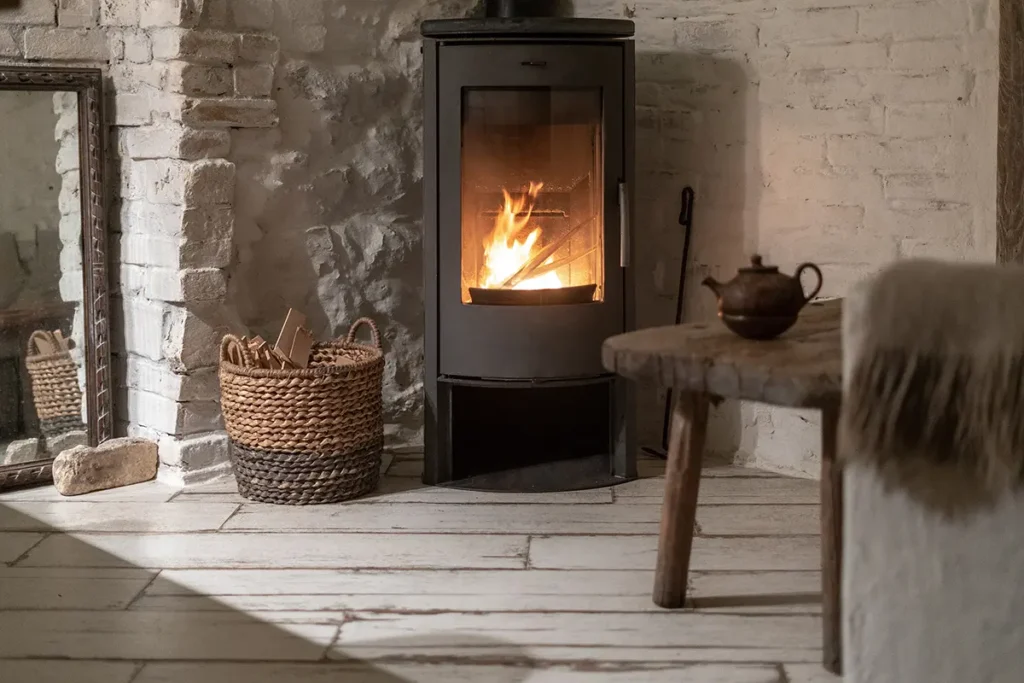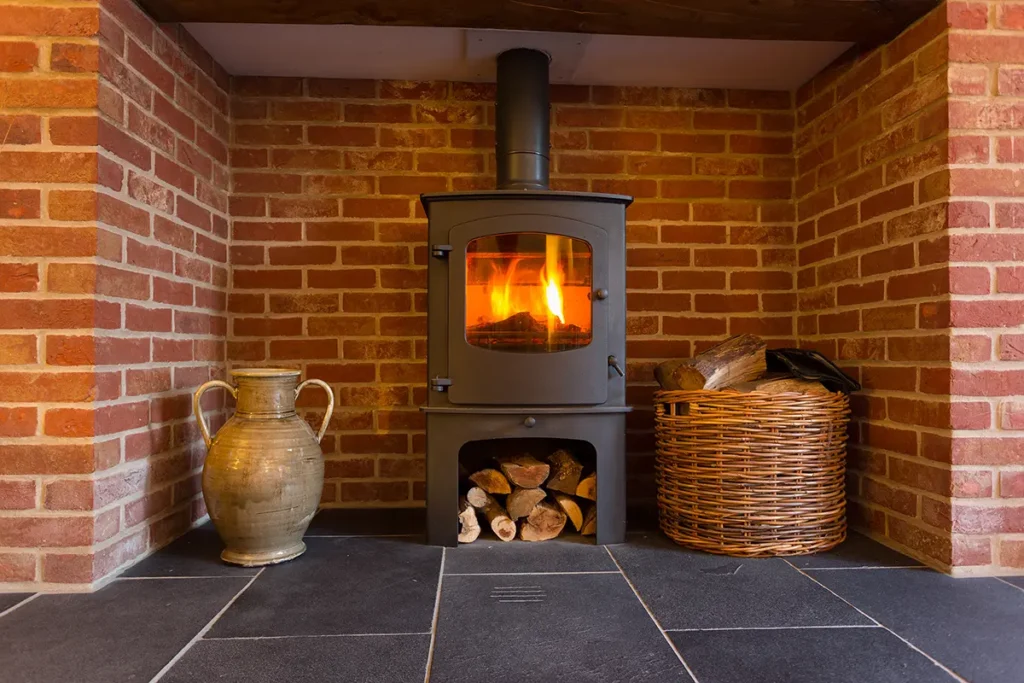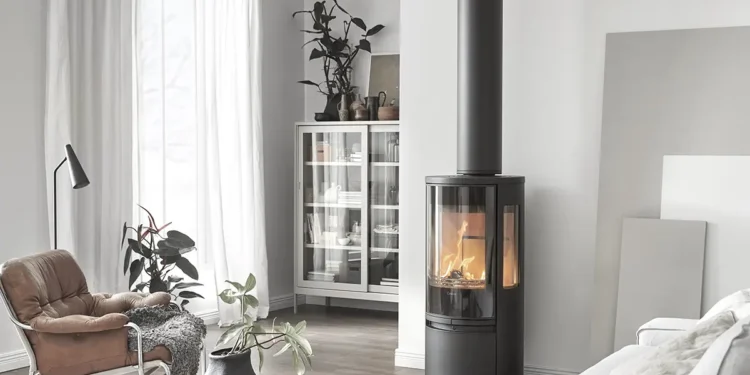All you need to know about safely and legally keeping a wood burning stove or traditional fireplace in your home.
Fire. Possibly our greatest invention, or rather, discovery.When our primitive ancestors mastered fire approximately two million years ago it propelled the evolutionary leap necessary (specifically the development of larger brains) to become the most intelligent species on Earth.

So perhaps that’s why we still find fire so alluring. Whether gazing into the leaping flames of a great bonfire or the dying embers of a traditional hearth, fire maintains a primitive fascination and sense of comfort that simply cannot be replicated by electricity.
Furthermore, as we enter another winter besieged by uncertainty over energy prices, wood burning stoves may become a fiscal necessity, above and beyond their obvious place in our hearts as a sturdy style statement.
However, with great power comes great responsibility and our ever-expanding wealth of accumulated information demands that we no longer burn with reckless abandon, for the sake of our own health as much as for the sake of the planet. And while using fire to heat our homes is not strictly illegal, the new wood burning stove regulations that came into force in 2022 affect what type of log burner you can buy and what fuel you can burn in it.
This recently enacted law mandates that all newly produced wood burning stoves and multi-fuel stoves must adhere to rigorous guidelines… referred to as Ecodesign. The updated regulations prohibit the sale of the most environmentally harmful fuels, thereby guaranteeing that only the eco-friendly stoves are now available for purchase.

While the regulations pertain to the manufacturing of new units, it is permissible to continue using existing wood burning stoves that do not meet the updated standards. However, it is important to note that if you reside in a smoke control area, additional criteria must be met, which may impact the use of your stove. You can contact your local council to find out if your home falls under this jurisdiction; non-compliance can lead to a fine of up to £1,000.
In terms of fuel, government rules state: ‘Burning at home, particularly with traditional house coal or wet wood, is a major source of the pollutant PM2.5 – which has been identified by the World Health Organisation as the most serious air pollutant for human health.
‘People with log burners and open fires can still use them but will be required to buy cleaner alternative fuels – if they are not already – such as dry wood and manufactured solid fuels which produce less smoke.
‘Both of these cleaner options are just as easy to source and more efficient to burn, making them more cost effective.
‘Burning dry wood also produces more heat and less soot than wet wood and can reduce emissions by up to 50%.’
Alongside being savvy about what fuel you burn, there are other precautions you must take for you and your family’s safety.
It is highly recommended to enlist the services of a certified installer when fitting your stove, as those in the trade such as Iron and Wood possess the expertise to ensure optimal efficiency and minimal emissions from your stove.
It’s also essential to place a carbon monoxide alarm – which detects the presence of the potentially lethal gas – in the same room as your wood burner or multi-fuel stove, and it’s recommended to have your stove and chimney inspected annually, as well as adding a flue liner, to ensure risk is minimalised at all times.
Finally, be sure to sweep your stove frequently – the more you use it the more frequently you will need to sweep – and always purchase your wood from a reliable source.
Remember, mindful and informed burning will ensure you have a cosy and happy winter and, what’s more, lower energy bills too.










